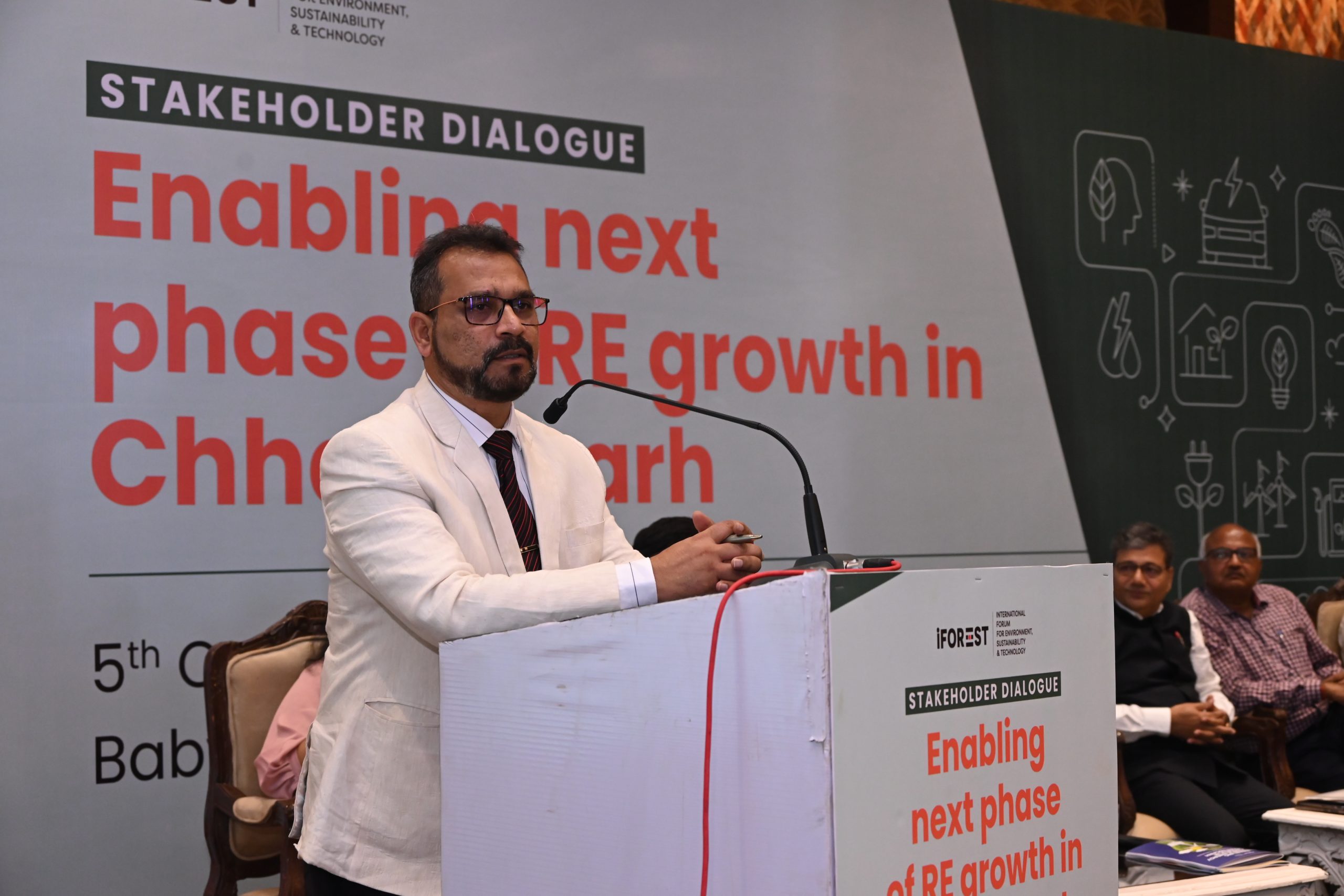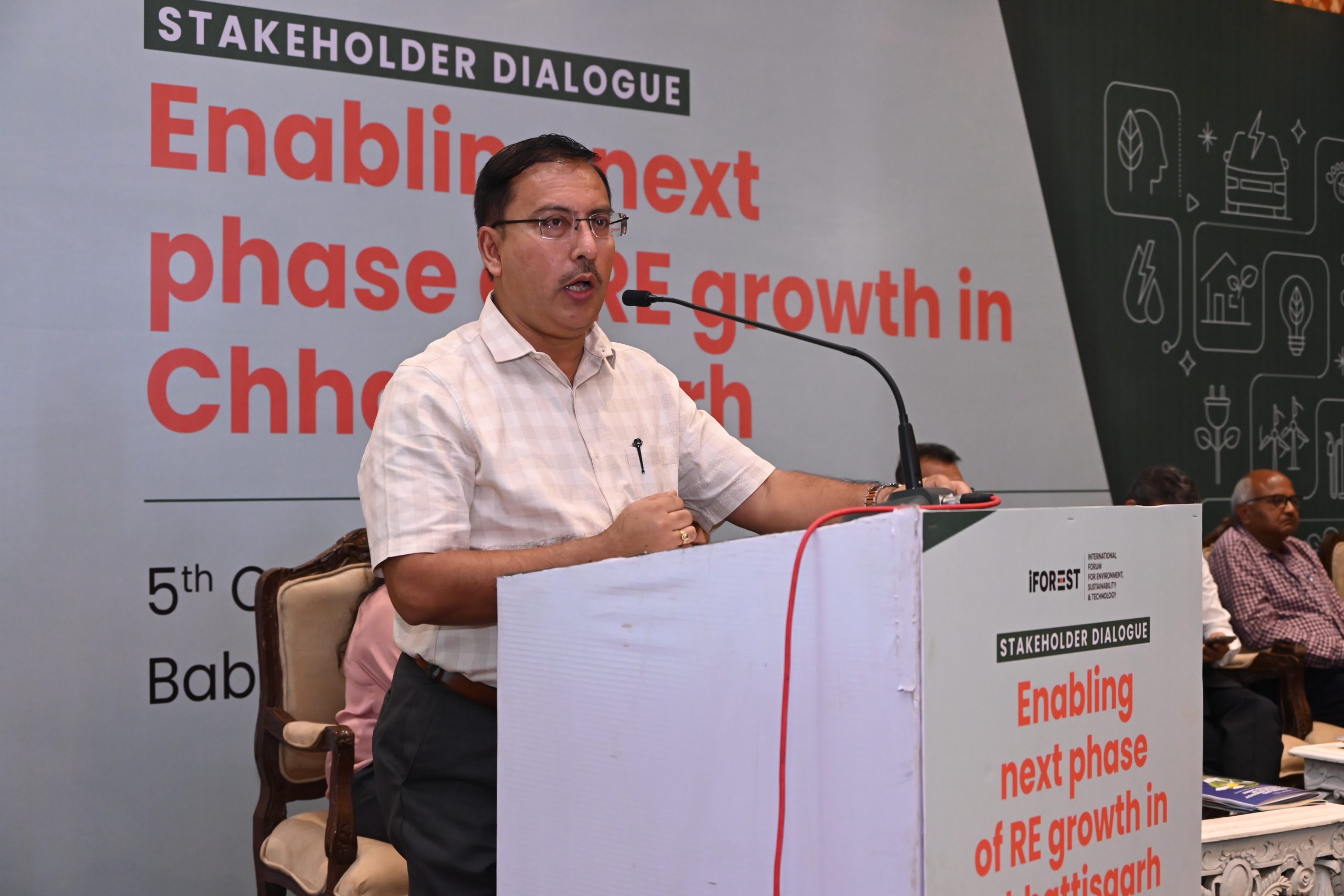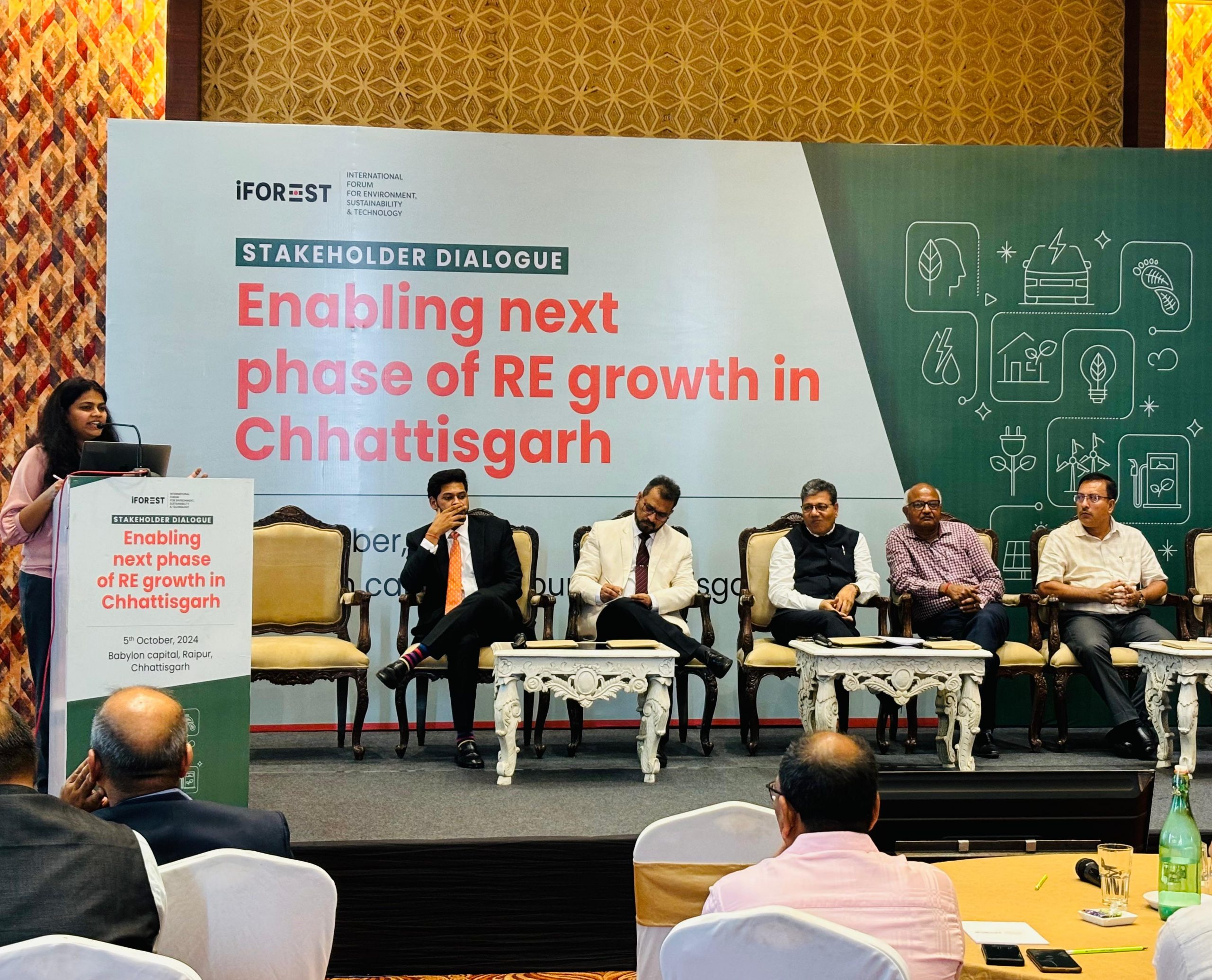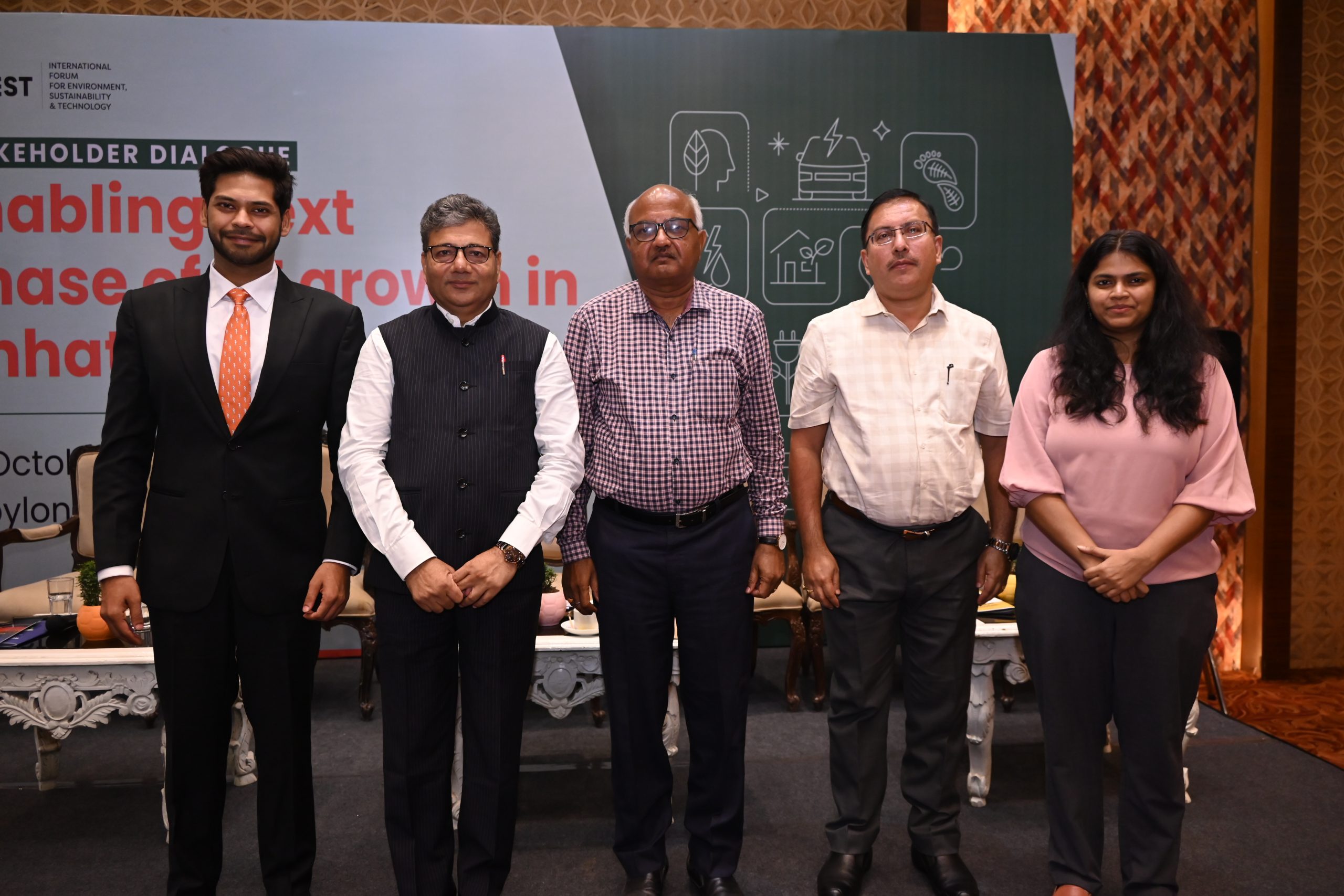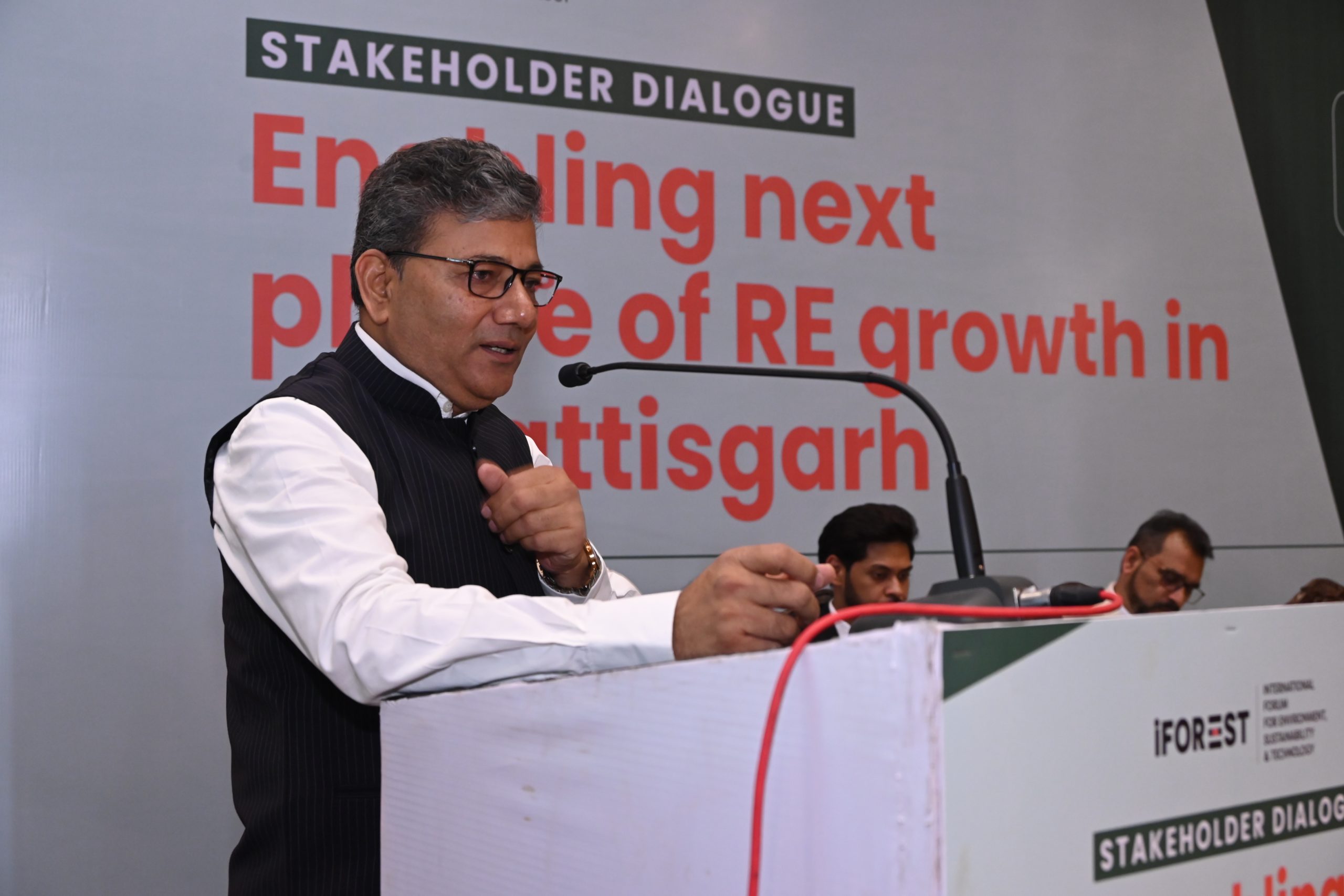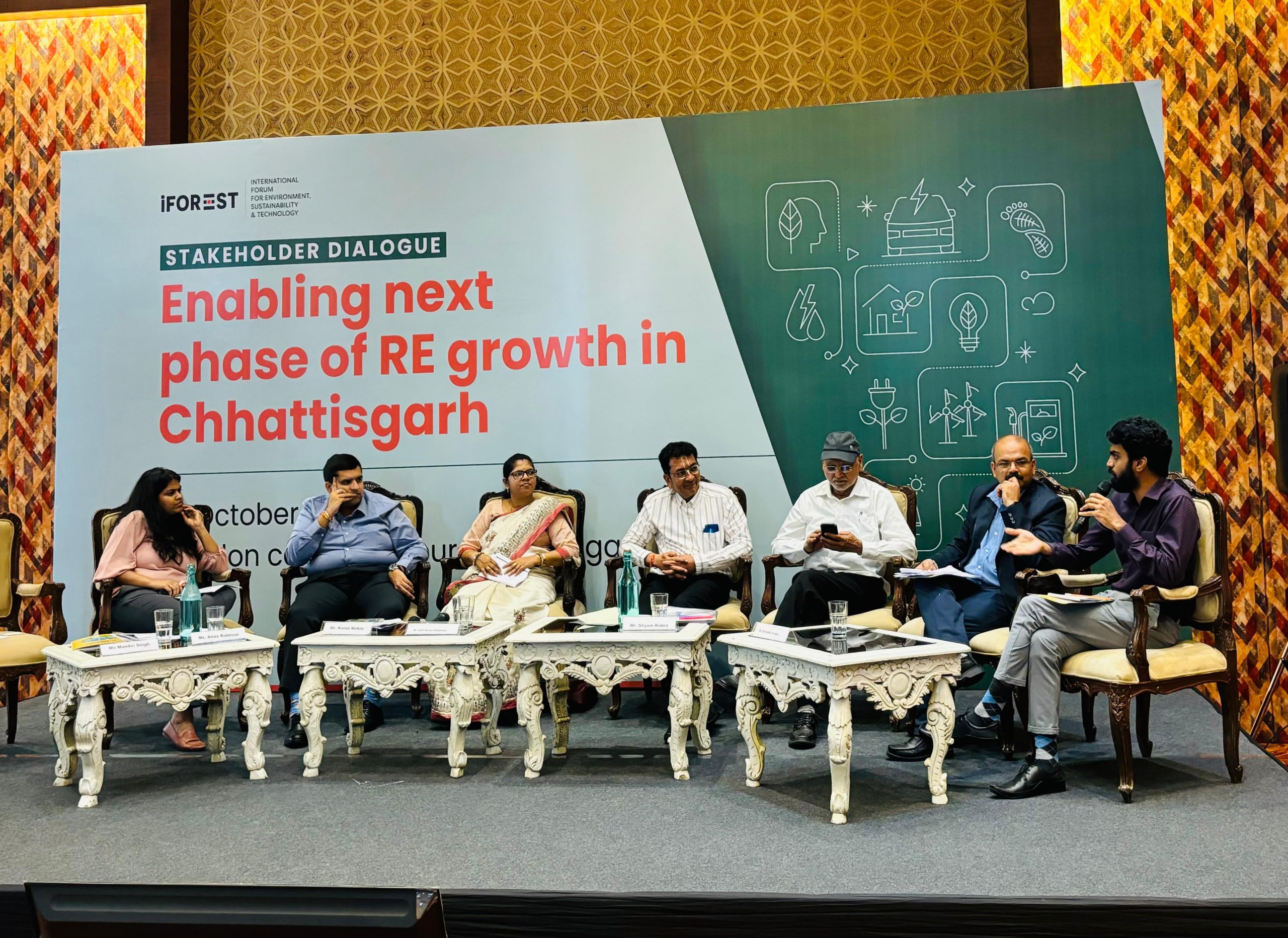Stakeholder Dialogue - Enabling next phase of RE Growth in Chhattisgarh
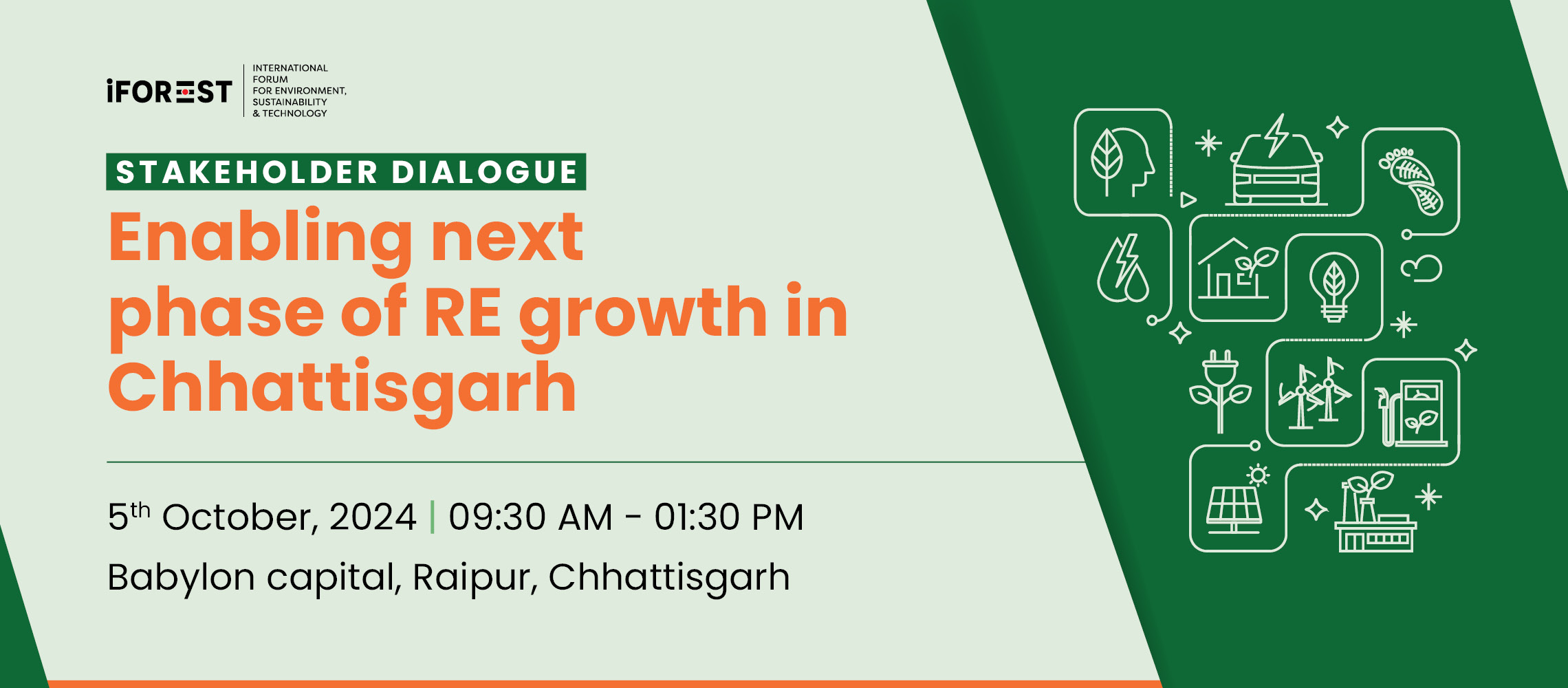
The International Forum for Environment, Sustainability, and Technology (iFOREST), a leading environmental think tank, recently convened a stakeholder dialogue titled “Enabling Next Phase of Renewable Energy Growth in Chhattisgarh”. The event, convened on 5th October 2024 at Babylon Capital, Raipur brought together together policymakers, industry leaders, think tanks, domain experts, and media among many to discuss strategies and pathways for scaling renewable energy (RE) capacity in Chhattisgarh.
RE sector in Chhattisgarh holds tremendous potential. However, the potential remains vastly underutilised. RE capacity in the state comprises a mere 11% of the state’s utility capacity of 14,184 MW and 1.7% of captive capacity of 5,850 MW.
Despite, the state accounting for 10% of India’s Distributed Renewable Energy (DRE)— fourth highest share nationwide—Chhattisgarh’s total RE capacity contributes only 1.07% to the country’s overall RE landscape with 1615 MW. With the state’s commitments towards Renewable Purchase Obligation (RPO), the state will need to procure 43.33% of all electricity from RE, which demands the installation of at least 34,667 GW of RE capacity in the state. The need for RE capacity expansion is not limited to complying with RPO targets, but also crucial for climate mitigation goals and creating jobs in a growing green sector.
During the stakeholder dialogue, iFOREST released three key reports underscoring the significant potential for renewable energy (RE) growth in Chhattisgarh:
- The state’s solar potential has been re-assessed at over 41,000 MW, twice the MNRE’s suggestive estimations. The top 5 districts, namely districts of Bolada Bazar, Surajpur, Korba, Raigarh and Jashpur account for nearly 50% of ground-mounted solar potential.
- With 258 large water bodies and reservoirs in the state. Chhattisgarh’s floating solar potential is estimated to be at least 4,792 MW. Gariaband district’s Sikasar dam alone could support at least 2,494 MW, making it a key area for large-scale floating solar projects.
- Chhattisgarh offers considerable locations for wind projects. iFOREST’s assessment of wind energy potential in the state suggests a potential of 19,273 MW at 150 Above Ground Level (AGL with several very-high potential land parcels for wind power installations.
- Chhattisgarh’s biomass potential is re-assessed at 4,272 MW, which is approximately ten times higher than MNRE’s estimates. The largest contributions come from the districts of Rajnandgaon, Janjgir–Champa, and Raigarh, which account for the state’s 40% biomass energy potential.
2. Impact of Transmission Costs on RE Procurement: iFOREST analysed the economic effects of the phased removal of the Inter-State Transmission System (ISTS) charges. As per iFOREST’s assessments, the current ISTS waiver is 60 paise per unit, which is set to be phased out from 2025 to 2028. Following the phase-out of waivers, it is anticipated that intra-state RE procurements are likely to become more viable than imports through the Inter-State Transmission System (ISTS).
3. Enabling Renewable Energy Growth in Chhattisgarh: iFOREST’s review of current policy and institutional mechanisms in the state reveals a lack of comprehensive and proactive RE policy and inadequate directions for RE institutions. In this regard, iFOREST suggests a need for policy and institutional strengthening to support the scaling of the RE sector in the state:
- Adopt a comprehensive approach to the RE policy framework with dedicated policy target(s) and provide technology-specific guidelines for high-potential RE segments.
- Policy to focus on the creation of demand for RE projects through promoting unsolicited projects, Mandating capacity quota for bidding-based procurements, and adequate incentives to cover the prevailing cost differential.
- Ease of doing business by simplifying implementation mechanisms; land banks, digitized single window, and Standard Operating Procedures (SOPs) for project approvals.
- Leverage on state’s industrial base to expand RE equipment manufacturing and skill development.

